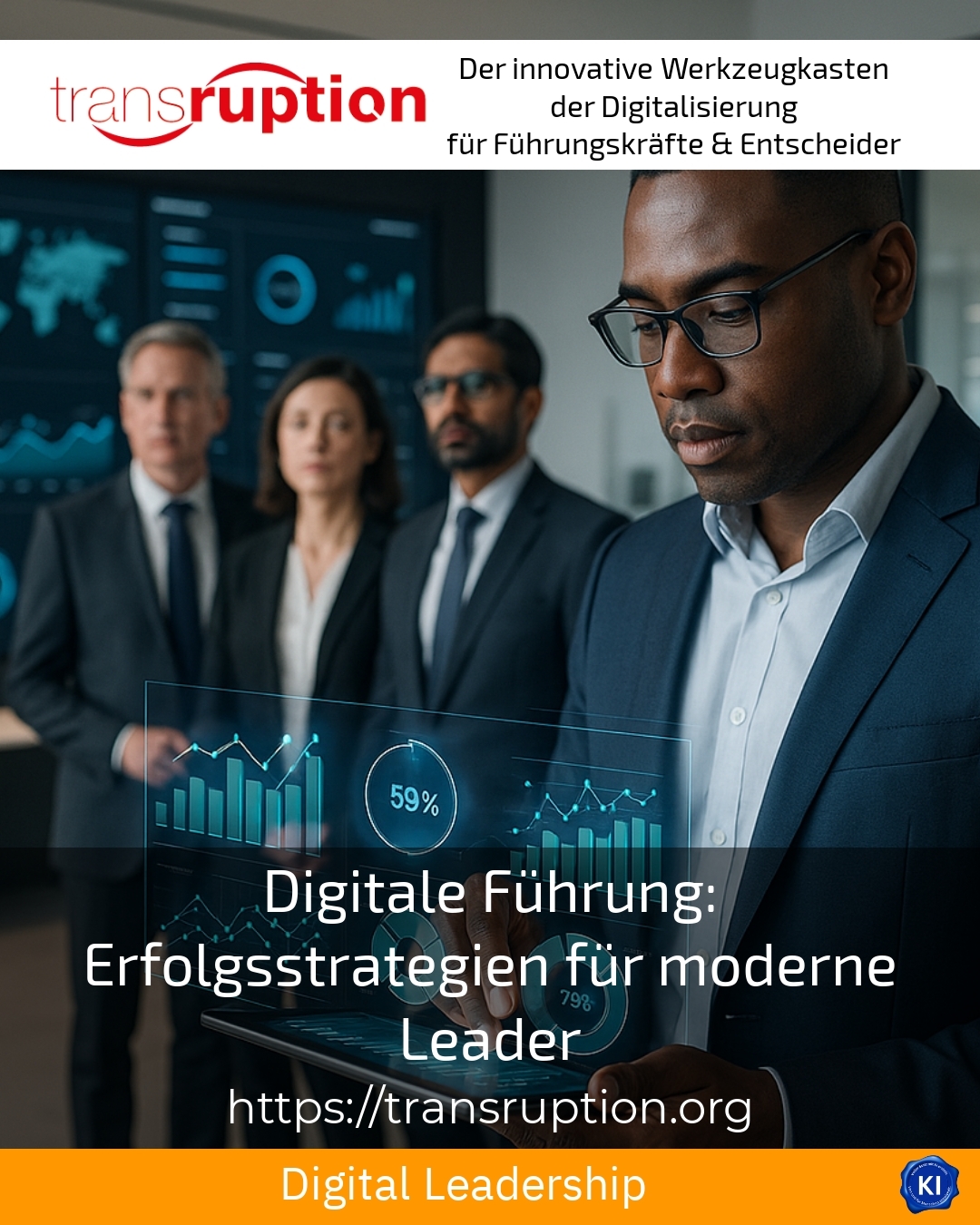The role of digital leadership in the modern working world
In the current economic and social environment, the Digital leadership is becoming increasingly important. It describes more than the mere use of digital technologies - it is a holistic management style that actively accompanies digital change and sets the course for long-term success. Companies from a wide range of industries are realising how important it is to combine technology with a human-centric management culture. The spectrum ranges from the use of digital tools to the promotion of agile, networked and transparent collaboration.
Many managers are experiencing new challenges in this context: They have to react quickly to market changes, digitally network teams and at the same time fulfil the individual needs of their employees. The Digital leadership has a supportive effect here, as it provides orientation and accompanies change.
Core principles and key competences of digital leadership
The basis of effective digital leadership form several interlinked competences. A solid understanding of technology, for example, allows managers to utilise digital tools in a targeted manner and make better use of opportunities. At the same time, transparency in communication is important: digital channels must be used consciously in order to keep all team members regularly informed and involved.
Agility and adaptability are further key characteristics. In complex projects, they help to facilitate structured change and not only to involve employees, but also to empower them. Last but not least Digital leadership a collaboration culture that breaks down silos and networks teams across locations.
Typical core competences at a glance:
- Technological expertise and data-driven decision-making
- Agile change management and flexible responsiveness
- Transparent and empathetic communication
- Collaborative leadership and the promotion of self-organised teams
- Continuous learning and promoting innovation
Practical examples: How digital leadership works in companies
In practice Digital leadership in a wide variety of facets, as examples from different industries illustrate.
In mechanical engineering, companies are increasingly using shop floor tablets and real-time KPIs. This reduces reject rates and significantly shortens response times to faults. Managers use data-based management and create a new level of transparency at the company site.
In plastics technology, product-based teams work together on a sprint basis. The time-to-market is measurably shorter, innovations are created more quickly and employees proactively contribute their own ideas. This also shows how digital methods promote agile working methods and increase motivation at the same time.
Energy suppliers use intelligent fault apps together with situation boards that ensure transparency across all processes. Managers guarantee clear escalation channels and thus ensure stable communication, even at peak times. This strengthens employee trust and satisfaction.
The example of a painting company that combines the digital capture of knowledge from the older generation with new digital tools is particularly impressive. The managers create a bridge between the preservation of valuable experience and innovative strength.
BEST PRACTICE at the customer (name hidden due to NDA contract) A medium-sized service provider used targeted transruption coaching to support the introduction of digital collaboration platforms. This enabled managers to improve transparency, intensify the exchange of knowledge and ensure that employees actively participate. Project durations were shortened and satisfaction levels rose visibly.
Action-oriented tips for implementing digital leadership
Modern managers who want to master the challenges of the digital world can benefit from the following practical aids:
- Set a clear vision: Formulate a mission statement that combines technological development with employee commitment.
- Use digital tools sensibly: Less is more - choose tools that actually promote collaboration and transparency.
- Encourage feedback and learning: Develop a culture in which errors are analysed and innovation is continuously supported.
- Strengthen agile mindset: Use methods such as sprint planning or retrospectives to react flexibly to changes.
- Empowering and networking employees: Hand over responsibility and encourage independent, networked work.
These impulses are used in coaching sessions around Digital leadership frequently addressed. In this way, the necessary attitude and skills development can be supported alongside specific projects.
Digital leadership - a dialogue between technology and people
Increasing digitalisation is not only changing processes, but also expectations of leadership and collaboration. The digital world requires leaders to help shape and support their teams and act as bridge builders between technology and human expertise.
Through a conscious Digital leadership opens up new avenues for collaboration, leverages employees' potential and successfully realises projects. The focus is not on technology alone, but on the question of how people can be professionally supported and empowered.
My analysis
The Digital leadership is not a short-term trend, but a strategic necessity for companies that want to be successful in a volatile market environment. Modern leaders combine technical understanding with empathetic communication and promote an agile culture. Practical examples from mechanical engineering, plastics technology and energy suppliers show what successful leadership in a digital context can look like. It is important not only to introduce digital tools, but also to take people with you and empower them during change. Transruption coaching can offer valuable support here to help companies on their way to confident digital leadership.
Further links from the text above:
Digital leadership: definition, competences, practice [1]
Digital leadership: Success factors for future-proof leaders [2]
Digital leadership: trends & challenges [3]
7 examples of successful digital transformation [4]
Digital leadership - characteristics & competences [5]
For more information and if you have any questions, please contact Contact us or read more blog posts on the topic TRANSRUPTION here.
















